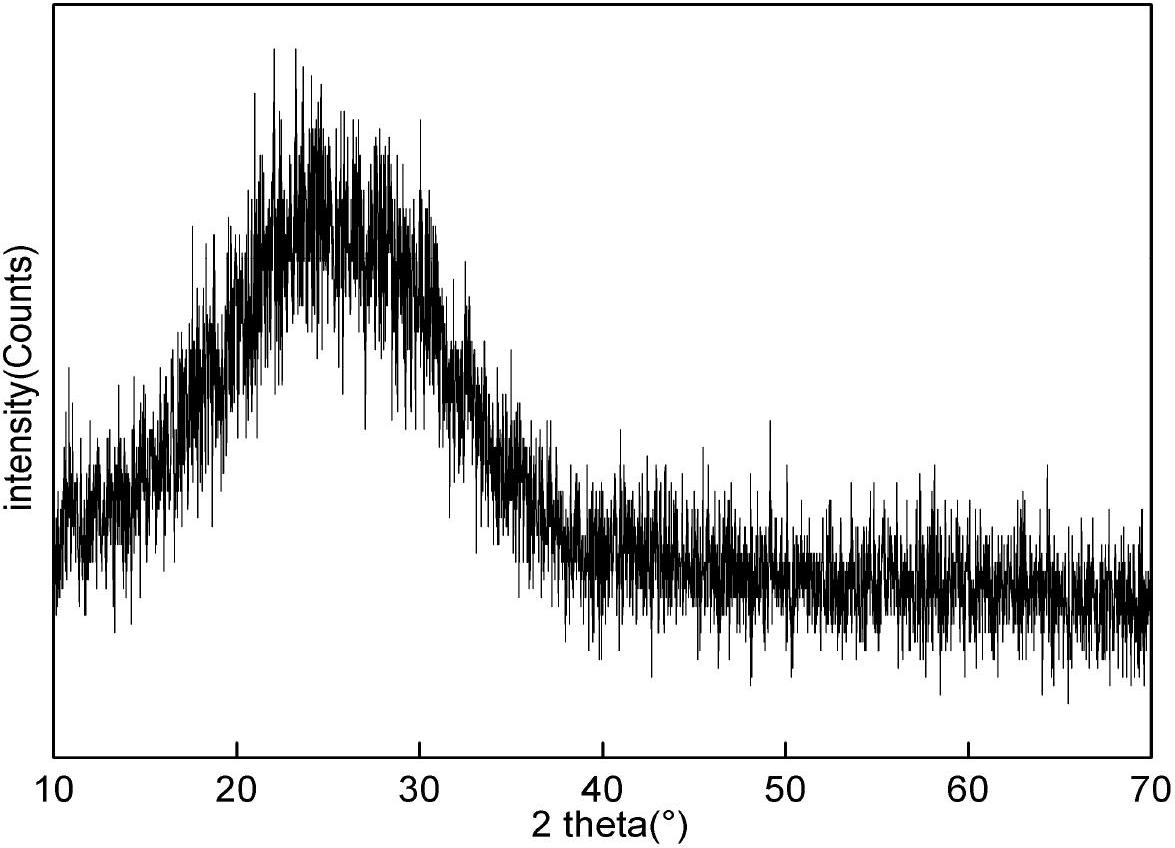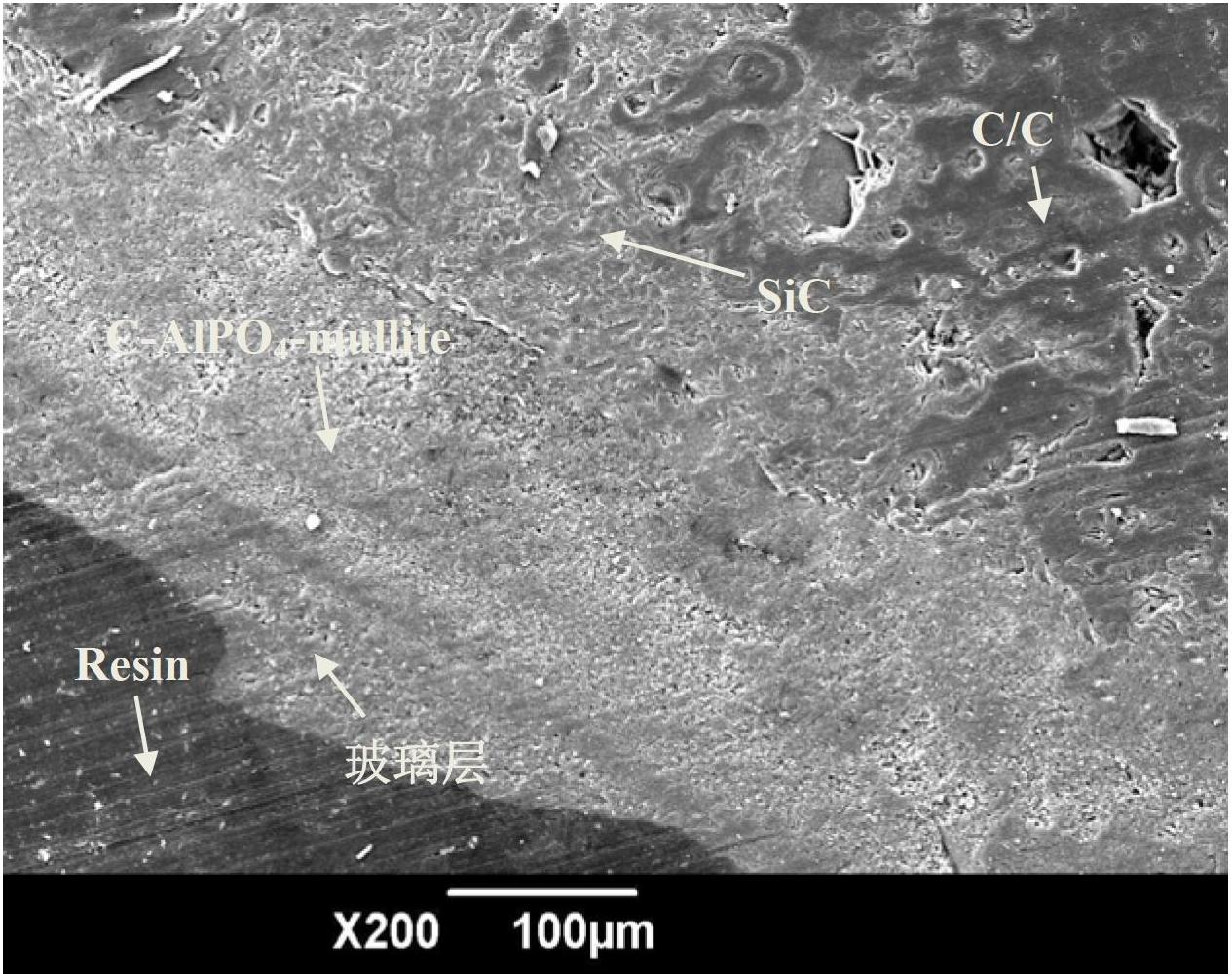Preparation method of C-AlPO4-mullite/glass layer gradient composite antioxidation coating
An anti-oxidation coating, c-alpo4-technology, is applied in the field of preparing carbon/carbon composite outer coatings, which can solve the problems of easy cracking of the outer coating surface, inability to complete the preparation at one time, and insufficient coating thickness, etc., to achieve Combining the effects of high strength, convenient operation and low preparation cost
- Summary
- Abstract
- Description
- Claims
- Application Information
AI Technical Summary
Problems solved by technology
Method used
Image
Examples
Embodiment 1
[0028] 1) Take commercially available analytically pure SiO 2 Powder, analytical pure B 2 o 3 Powder, analytical pure Al 2 o 3 Powder, analytically pure MgO powder, by SiO 2 :B 2 o 3 :Al 2 o 3 : MgO=5:3:2:1 mass ratio Mix the powder evenly, use wet ball milling and dry at a constant temperature of 60°C to get the mixed powder A;
[0029] 2) Put the mixed powder A into the crucible, then put the crucible into the silicon-molybdenum rod electric furnace, control the heating rate to 10°C / min, raise the furnace temperature from room temperature to 1300°C and keep it for 5h, then take out the crucible, Quickly put into cold water for rapid cooling, and grind the gained glass block into glass powder B;
[0030] 3) The commercially available aluminum phosphate powder was calcined at 1300°C and wet ball milled to prepare C-AlPO with an average particle size of 5 μm 4 , take 0.5g of nano-mullite powder and 1g of C-AlPO 4 Add the powder into the Erlenmeyer flask, then pour 40...
Embodiment 2
[0036] 1) Take commercially available analytically pure SiO 2 Powder, analytical pure B 2 o 3 Powder, analytical pure Al 2 o 3 Powder, analytically pure MgO powder, by SiO 2 :B 2 o 3 :Al 2 o 3 : MgO=7:6:3:3 mass ratio to mix the powder evenly, and dry at 60°C after wet ball milling to obtain the mixed powder A;
[0037] 2) Put the mixed powder A into the crucible, then put the crucible into the silicon-molybdenum rod electric furnace, control the heating rate to 20°C / min, raise the furnace temperature from room temperature to 1400°C for 4 hours, then take out the crucible, Quickly put into cold water for rapid cooling, and grind the gained glass block into glass powder B;
[0038] 3) The commercially available aluminum phosphate powder was calcined at 1300°C and wet ball milled to prepare C-AlPO with an average particle size of 5 μm 4 , take 1g of nano-mullite powder and 3g of C-AlPO 4 Add the powder into the Erlenmeyer flask, then pour 200ml of isopropanol with a p...
Embodiment 3
[0044] 1) Take commercially available analytically pure SiO 2 Powder, analytical pure B 2 o 3 Powder, analytical pure Al 2 o 3 Powder, analytically pure MgO powder, by SiO 2 :B 2 o 3 :Al 2 o 3 : MgO=9:5:5:2 mass ratio Mix the powder evenly, use wet ball milling and dry at a constant temperature of 60°C to get the mixed powder A;
[0045] 2) Put the mixed powder A into the crucible, then put the crucible into the silicon-molybdenum rod electric furnace, control the heating rate to 40°C / min, raise the furnace temperature from room temperature to 1500°C for 3 hours, then take out the crucible, Quickly put into cold water for rapid cooling, and grind the gained glass block into glass powder B;
[0046] 3) The commercially available aluminum phosphate powder was calcined at 1300°C and wet ball milled to prepare C-AlPO with an average particle size of 5 μm 4 , take 2g of nano-mullite powder and 4g of C-AlPO 4 Add the powder into the conical flask, then pour 800ml of isopr...
PUM
 Login to View More
Login to View More Abstract
Description
Claims
Application Information
 Login to View More
Login to View More - R&D
- Intellectual Property
- Life Sciences
- Materials
- Tech Scout
- Unparalleled Data Quality
- Higher Quality Content
- 60% Fewer Hallucinations
Browse by: Latest US Patents, China's latest patents, Technical Efficacy Thesaurus, Application Domain, Technology Topic, Popular Technical Reports.
© 2025 PatSnap. All rights reserved.Legal|Privacy policy|Modern Slavery Act Transparency Statement|Sitemap|About US| Contact US: help@patsnap.com


